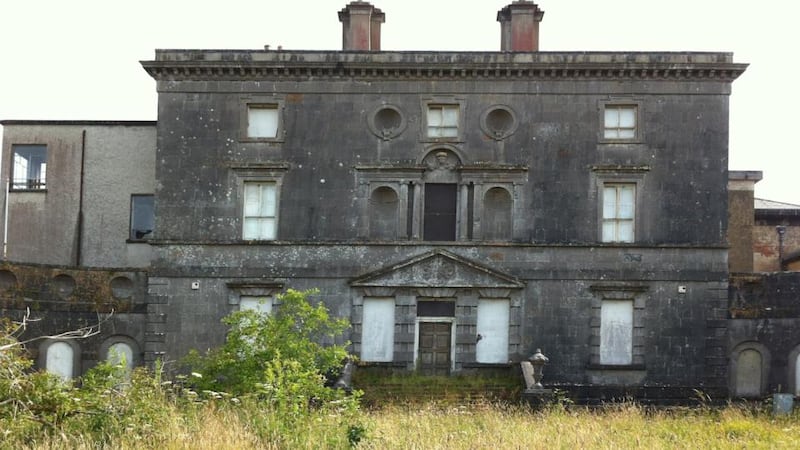Why is it of interest?
Hazelwood House is noted as the first Palladian house in Ireland designed by Richard Castle, the architect who designed Leinster House, Powerscourt House and Russborough House. The house has a three-bay, three-storey central block linked by arcaded quadrants to a three-bay, two-storey kitchen and stable blocks. It is on a wooded peninsula jutting out into Lough Gill to the east of Sligo town with views of Ben Bulben. When first built for Owen Wynne, there was a formal Dutch style garden with two octagonal walled gardens and a long avenue leading to the end of the peninsula – all part of the 15,000-acre estate. The house now sits on 81 acres next to a Special Area of Conservation.
What state of dereliction is it in?
Hazelwood House is deemed to be one of the most at risk Palladian mansions in Ireland. It has suffered several losses to its original design. In the 1870s, a three-bay, two-storey wing was added on the western side of the main block which took from Castle's symmetrical composition. The main staircase was removed in the 1950s and replaced with a concrete flight of stairs. Many chimney pieces were stolen and replaced with replicas. The Wynne family left the house shortly after Independence and in 1937, the house and surviving lands were sold to the Land Commission and State Forestry Department. In the 1940s it was used as a military barracks and was almost demolished completely but saved for use as a psychiatric hospital. In 1969 an Italian firm, Snia, built a giant factory for nylon yarn next to Hazelwood House, destroying the gardens and blocking views of Lough Gill. This factory was later used by a Korean videotape firm which ceased operations in 2005.
What repairs have been carried out?
A group of local investors, Foresthaze Development, bought the site in 2006 and received a grant from the Heritage Council to do repair work on the roof with the long-term view of restoring the house as part of a bigger development on the site. They were refused planning permission to build 158 detached houses, four blocks of apartments and 13 lakeside berths in 2007. Foresthaze Development was placed in receivership in October 2013. The 80-acre property, including Hazelwood House and the derelict factory building, has been for sale since May 2013 for €2.5 million. The house is now deteriorating further due to high moisture levels internally yet the exterior remains in good condition. The site is partially surrounded by a Coillte-managed forest walk which is popular among locals and visitors.

Who is championing its cause?
The Irish Georgian Society and An Taisce have lobbied for years for its preservation. More recently, Hazelwood Heritage Society launched a campaign calling on Hazelwood to be "gifted" to the people of Sligo and developed as a cultural, heritage and educational tourism amenity. Beatrice MacDonald, chairwoman of Hazelwood Heritage Society says, "given the significant cost of restoring Hazelwood House and carrying out remedial work to the surrounding industrial site and environment, we think it would be best developed as a public/private partnership between those who have its best interests at heart."
(hazelwoodheritagesociety.ie)
What happens next?
"Foresthaze Developments planned to transfer the house to the Irish Heritage Trust had their planning permission for developments on the site been granted," explains Donough Cahill, executive director of the Irish Georgian Society. "What Hazelwood House needs now is a long-term vision which could provide tourist, heritage and local amenity as part of Sligo town's expansion strategy. It's a picturesque location on Lough Gill with a nationally important 18th Century house. The potential for the house could be realised over time if the site itself became part of Sligo town's development plan in a similar style to properties like Ardgillan Castle in Balbriggan and Marlay Park in Rathfarnham."
If you know of an important building that has fallen into disrepair email buildingsatrisk@irishtimes.com
SYLVIA THOMPSON








